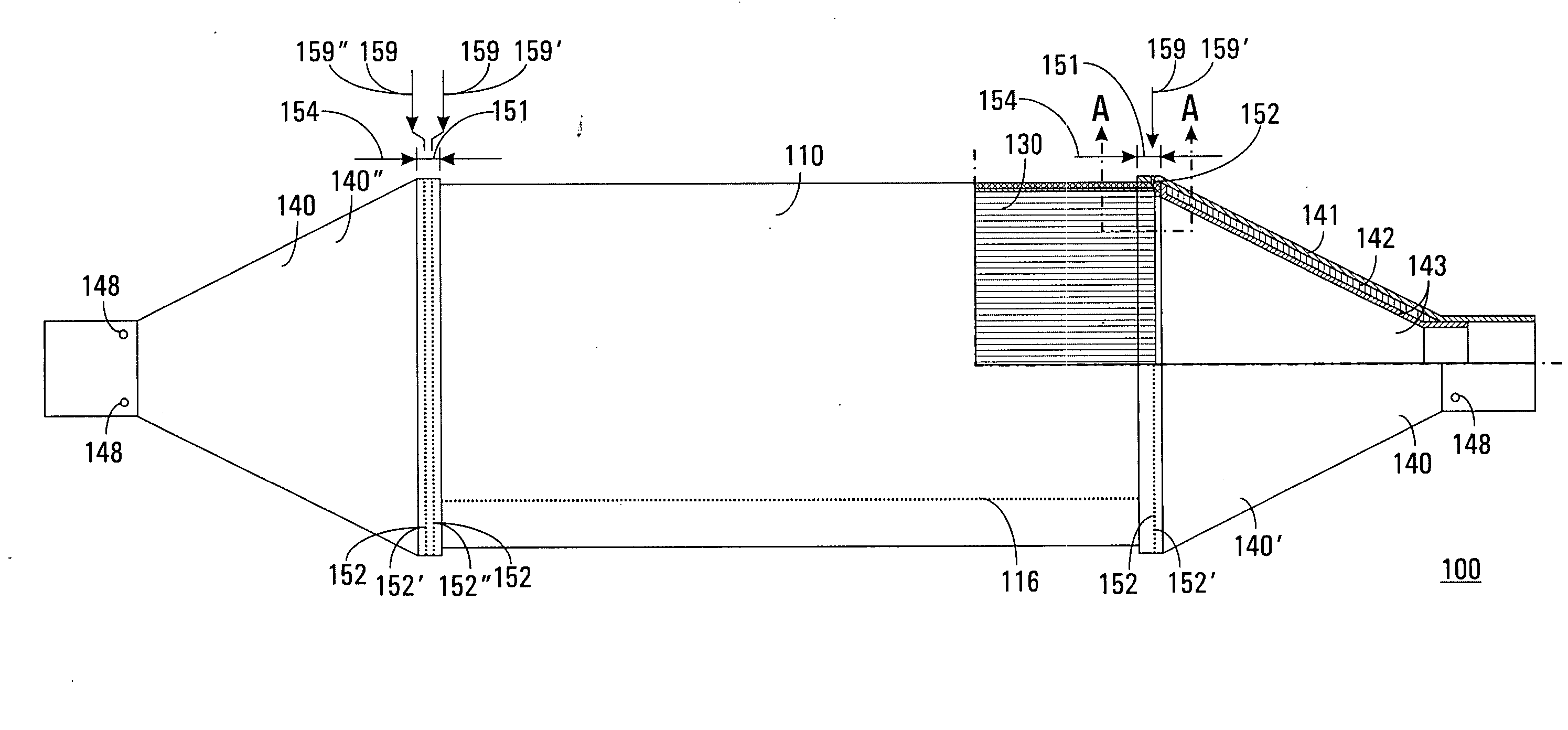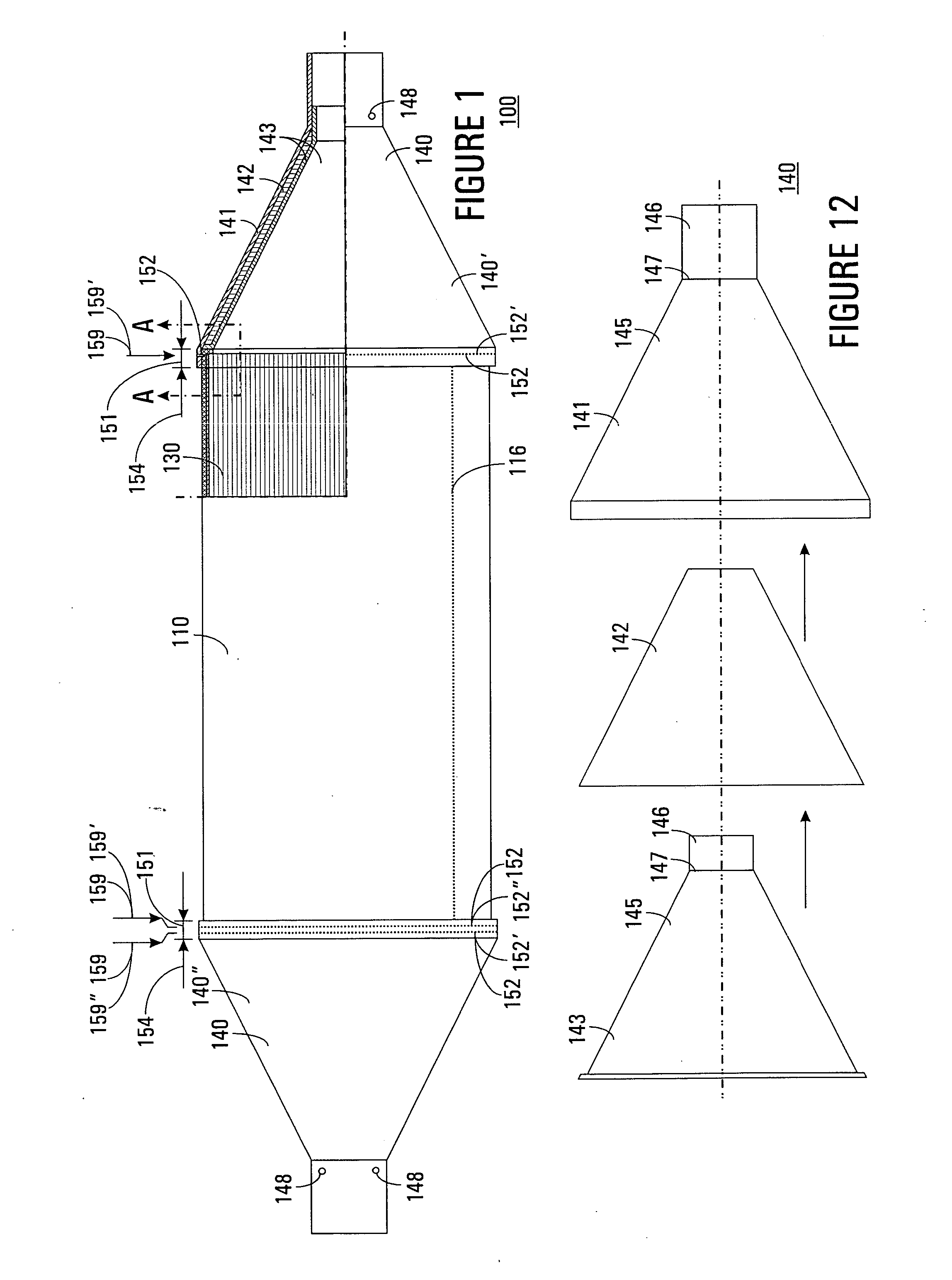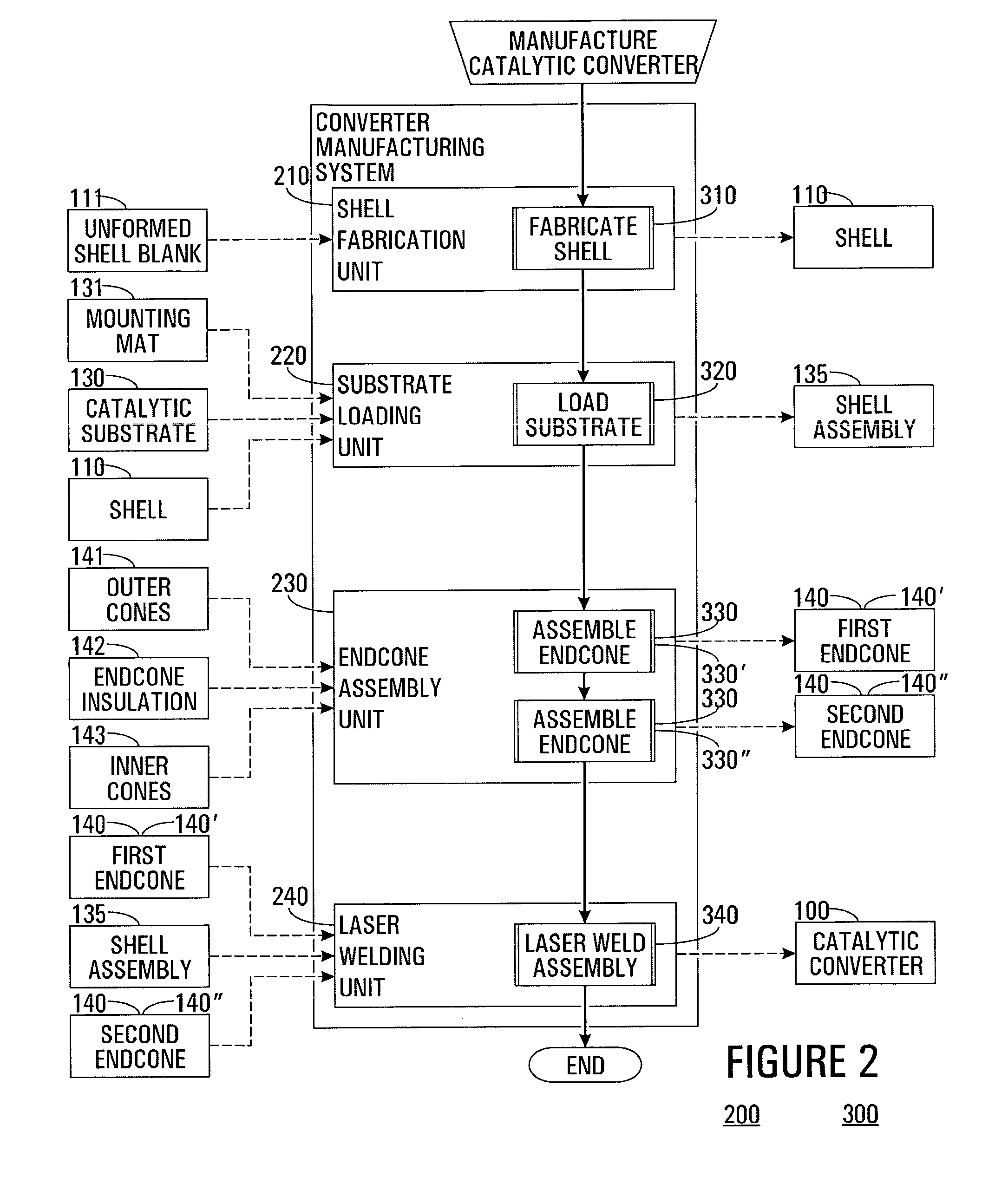Catalytic converter and method for manufacture thereof
a catalytic converter and converter technology, applied in the field of catalytic converter manufacturing, can solve the problems of fracturing and other damage to the ceramic substrate, affecting the function of the converter, and affecting the operation of the machine/engine,
- Summary
- Abstract
- Description
- Claims
- Application Information
AI Technical Summary
Benefits of technology
Problems solved by technology
Method used
Image
Examples
Embodiment Construction
[0038]FIG. 1 shows a side view of a laser-welded cone-shell catalytic converter 100 with one corner cut away to depict internal components thereof. FIG. 2 shows a block diagram depicting a system 200 for the manufacture of catalytic converter 100, and a flowchart depicting a process 300 by which catalytic converter 100 may be manufactured by system 200 in accordance with a preferred embodiment of the present invention.
[0039] For purposes of clarity, a reference number assigned to an item identifies that same item throughout this discussion and in all relevant Figures. Catalytic converter 100 and all components thereof are assigned reference numbers between 100 and 199, inclusively. Similarly, catalytic-converter manufacturing system 200 and all components thereof are assigned reference numbers between 200 and 299, inclusively. Likewise, catalytic-converter manufacturing process 300 and all subprocesses and tasks thereof are assigned reference numbers between 300 and 399, inclusivel...
PUM
| Property | Measurement | Unit |
|---|---|---|
| turndown depth | aaaaa | aaaaa |
| thickness | aaaaa | aaaaa |
| width | aaaaa | aaaaa |
Abstract
Description
Claims
Application Information
 Login to View More
Login to View More - R&D
- Intellectual Property
- Life Sciences
- Materials
- Tech Scout
- Unparalleled Data Quality
- Higher Quality Content
- 60% Fewer Hallucinations
Browse by: Latest US Patents, China's latest patents, Technical Efficacy Thesaurus, Application Domain, Technology Topic, Popular Technical Reports.
© 2025 PatSnap. All rights reserved.Legal|Privacy policy|Modern Slavery Act Transparency Statement|Sitemap|About US| Contact US: help@patsnap.com



